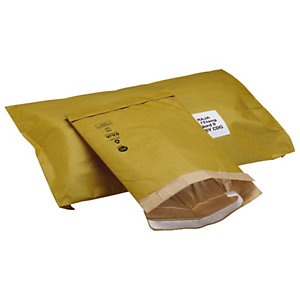The bubbles in bubble envelopes are the main features that identify this type of packaging from other packaging solutions in the market. Bubble envelopes have not always been around and they were preceded by other models of padded envelopes. At first, during the pioneer years of mail and mail delivery, people would wrap items to be sent in mail with an assortment of materials such as cloth, papers, or anything that would offer some cushioning. These were bulky and would be cumbersome to send over long distances. They subsequently would attract high postage costs.
In later years after the invention of the envelopes, a company known as jiffy designed an envelope that had wood wool cushioning and this was the first true padded envelope. The product was very popular and was used for several years. Jiffy was later taken over by another company called Sealed Air. Sealed Air is the company that came up with bubble wraps. Sealed Air changed from producing padded envelopes with wood wool and instead started using the bubble wraps. This new design quickly became the preferred design. This envelope was preferred since it attracted less postage costs. This is because the cushioning was now made of air which has negligible weight as compared to wood wool. Also the bubble envelopes are less bulky and occupy less space. The materials used are also easier to get. Wood wool comes from wood and hence is not very eco friendly. Air is abundant and is recyclable.
In later years after the invention of the envelopes, a company known as jiffy designed an envelope that had wood wool cushioning and this was the first true padded envelope. The product was very popular and was used for several years. Jiffy was later taken over by another company called Sealed Air. Sealed Air is the company that came up with bubble wraps. Sealed Air changed from producing padded envelopes with wood wool and instead started using the bubble wraps. This new design quickly became the preferred design. This envelope was preferred since it attracted less postage costs. This is because the cushioning was now made of air which has negligible weight as compared to wood wool. Also the bubble envelopes are less bulky and occupy less space. The materials used are also easier to get. Wood wool comes from wood and hence is not very eco friendly. Air is abundant and is recyclable.
Image from Pinterest
Bubble envelopes are of different kinds and different envelopes may have different sizes. Different bubble sizes will protect contents of the bubble envelope in different ways. For example, the large bubbles are usually used to cover space which is essential in packaging so as to restrain contents from moving around in their packaging. When items move around, they are likely to get damaged. Smaller bubbles will offer great protection from external compression forces, vibration forces and shock forces. This can be particularly destructive but they are well cushioned by the air bubbles.
Bubble envelopes can be made from home. All one needs to have are the normal envelopes, (of whichever size), adhesive, scissors, and adequate sheets of bubble wrap. One will then cut the bubble wrap into dimensions that will fit into the envelope to cover both of the interior sides. One then applies adhesive on the inside part of the bubble wrap and sticks it to the insides of the envelope to create a perfect homemade bubble envelope.
Bubble envelopes can be made from home. All one needs to have are the normal envelopes, (of whichever size), adhesive, scissors, and adequate sheets of bubble wrap. One will then cut the bubble wrap into dimensions that will fit into the envelope to cover both of the interior sides. One then applies adhesive on the inside part of the bubble wrap and sticks it to the insides of the envelope to create a perfect homemade bubble envelope.

 RSS Feed
RSS Feed